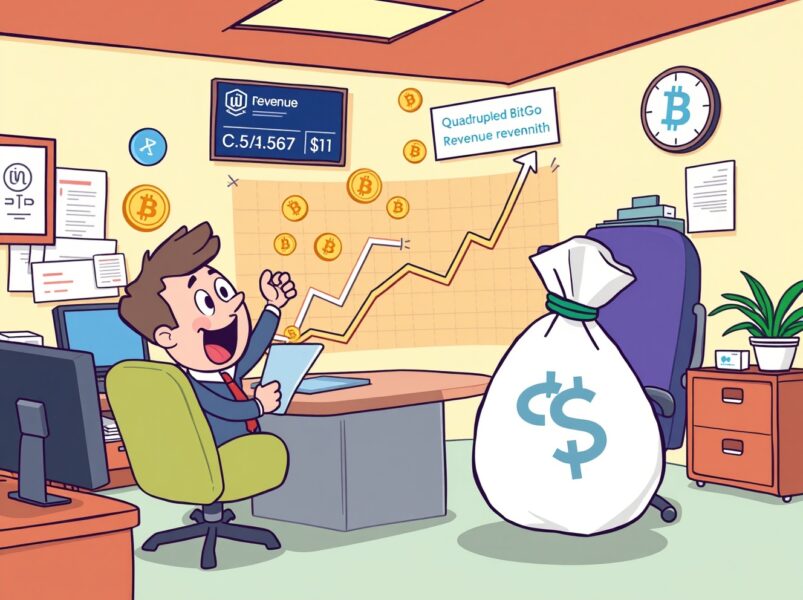Coinbase Says Banks’ Stablecoin Fears ‘Ignore Reality,’ Dismisses Deposit Drain Concerns
Coinbase has accused US banks of ignoring reality by claiming stablecoins will drain deposits and constrain their ability to lend, arguing that they expand the dollar’s global reach.
Policy chief Faryar Shirzad said on X that most stablecoin demand comes from outside the US, boosting dollar dominance rather than competing with domestic lenders.
“The ‘stablecoins will destroy bank lending’ narrative ignores reality,” Shirzad said. “Treating stablecoins as a threat misreads the moment: they strengthen the dollar’s global role and unlock competitive advantages that the US shouldn’t constrain.”
US banks have repeatedly expressed concerns that yield-bearing stablecoins will lead to large outflows from the traditional financial system, threatening lending that powers economic growth. They are urging Congress to clamp down on services that offer yields on stablecoins.
Concerns intensified after US President Donald Trump signed the GENIUS Act into law in July, providing regulatory clarity over their status and thus making them a more imminent threat to traditional banks.
Their market capitalization has since surged to more than $300 billion..
Stablecoin market cap (Source: DefiLlama)
The GENIUS Act currently bans stablecoin issuers from offering yields to token holders directly, but it does not extend this prohibition to third parties or affiliates. As such, banking groups in the US are urging Congress to address this “loophole,” especially since several stablecoins currently offer much better yields than the average savings account in the US.
Banks Have More Than Enough Liquidity For Lending
In his post, Shirzad shared a snippet of a recent report published by Coinbase Institute.
Coinbase said in the report that banks currently hold “vast reserves and safe assets,” adding that these institutions hold $3 trillion in balances at the Federal Reserve and “additional trillions” in Treasuries.
As such, the exchange said that banks have “excess liquidity” that is more than “what is needed for current lending activity.”
“If banks can absorb such reserves without impairing credit supply, it is inconsistent to claim that stablecoin growth poses a systemic threat,” Coinbase said.
Competition For Better Payments Is A Feature, Not A Flaw
Coinbase also argued in its report that competition in the payments space will be beneficial for users, and that banks should rather take part in the competition instead of trying to outright stall stablecoin progress.
“If stablecoins ever did attract substantial balances from US depositors, it would mean they had succeeded in offering faster, cheaper, and more programmable payments,” Coinbase said, adding that would be a “success” and not a risk.
The firm drew parallels between banks’ concerns with stablecoins and worries around the rise of money market funds (MMFs) in the 1980s.
“When MMFs offered market yields and near-instant access, consumers shifted deposits away from low-rate accounts,” the exchange said. Instead of destabilizing the financial system, MMFs “became a permanent and valuable part of the financial ecosystem,” it said.
“Stablecoins represent a similar kind of competitive pressure,” Coinbase said. The firm said the average interest rate paid by US savings accounts is 0.5%, even while short-term Treasury yields offer approximately 5%. This, according to Coinbase, “reflects inertia, frictions, and lack of alternatives.”
Like MMFs, stablecoins challenge incumbents ”not by increasing risk but by offering a better deal to consumers and businesses,” it said.
Some TradFi Firms Have Started Moving In On Stablecoins
TradFi firms also are moving into the stablecoin market. Payments giant Visa has recently announced that it will add support for four stablecoins across four blockchains to its existing offering, citing strong growth for its stablecoin products in the past year.
Citi and several major banks have also started exploring stablecoins, while reports suggest that Mastercard is in advanced talks to acquire the stablecoin infrastructure firm Zero Hash.
Legacy firm Western Union also announced earlier this week that it will deploy its own stablecoin on the Solana blockchain through Anchorage Digital.
Vous aimerez peut-être aussi

Forget SOL and XRP, The Best Crypto to Buy in 2025 Could Be This Other Token Rising Fast

mXRP rolls out as the first fully DeFi-compatible XRP yield product
